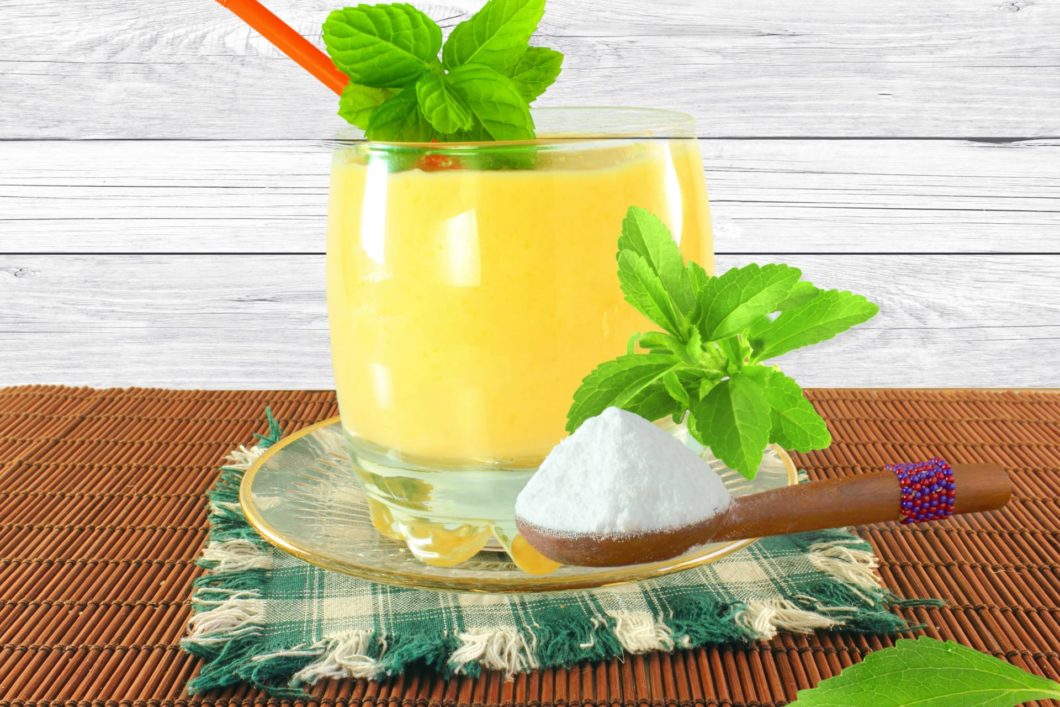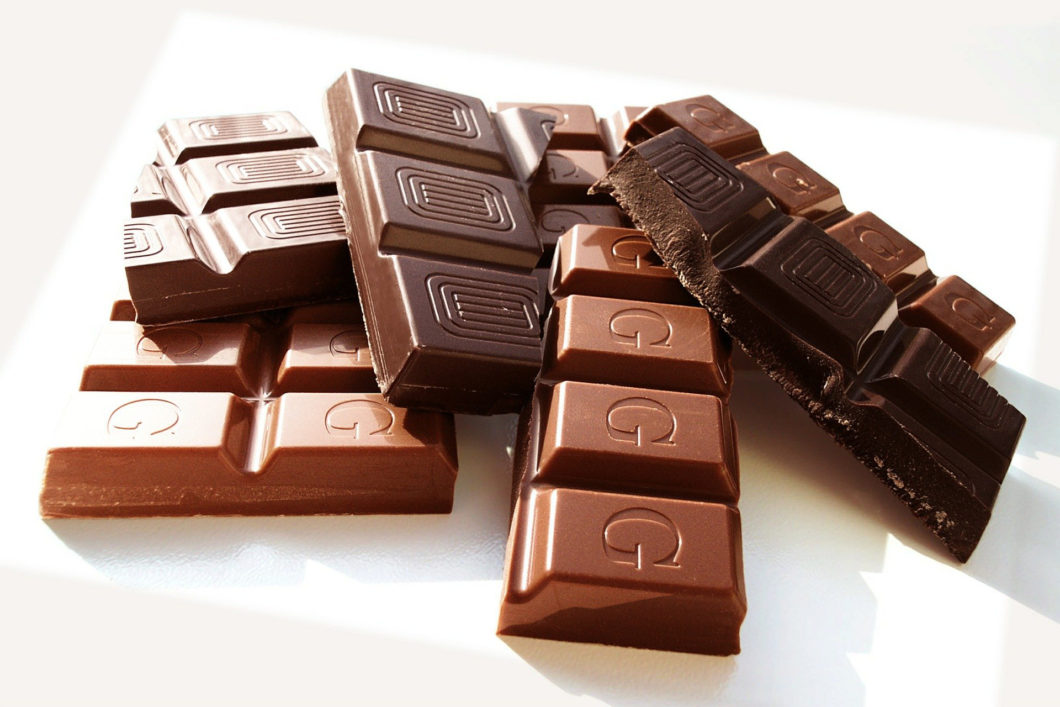Don’t mess with perfection – we dive deep into the difficult art of making sugar free chocolate
Product development • Making sugar-free chocolate is a difficult challenge. Roger Aidoo, who has dedicated his life to sugar-free quality chocolate, knows this. He moved from Ghana to Belgium in search of the perfect solution. For the past few years, Roger is the chocolate expert and research leader at Bayn.
Few things are as loved on this earth as chocolate. In Europe, we eat 5 kilos of chocolate per person each year. Experts go on chocolate tasting and discuss the difference between Valrhona and Godiva. How can you improve what is already perfect? What ingredients are optimal for making sugar-free chocolate as good as possible? We’ll find out. But first, let’s find out more about chocolate and its history.
The history of chocolate
It is not easy to know how long cocoa trees have existed, but they may have been cultivated for 3,000 years in Mesoamerica’s first high culture.
The word cocoa comes from the cacáua of the Aztecs and cocoa came to Europe by the Spaniards. The Aztecs called their drink xocolatl, which means ‘bitter water’. It has given us the word chocolate.
The Aztecs considered chocolate to be an aphrodisiac, a rumour that accompanied chocolate to Europe in the 16th century. The drink quickly became popular, and soon chocolate houses appeared in Holland, France, England and Italy, among other places.
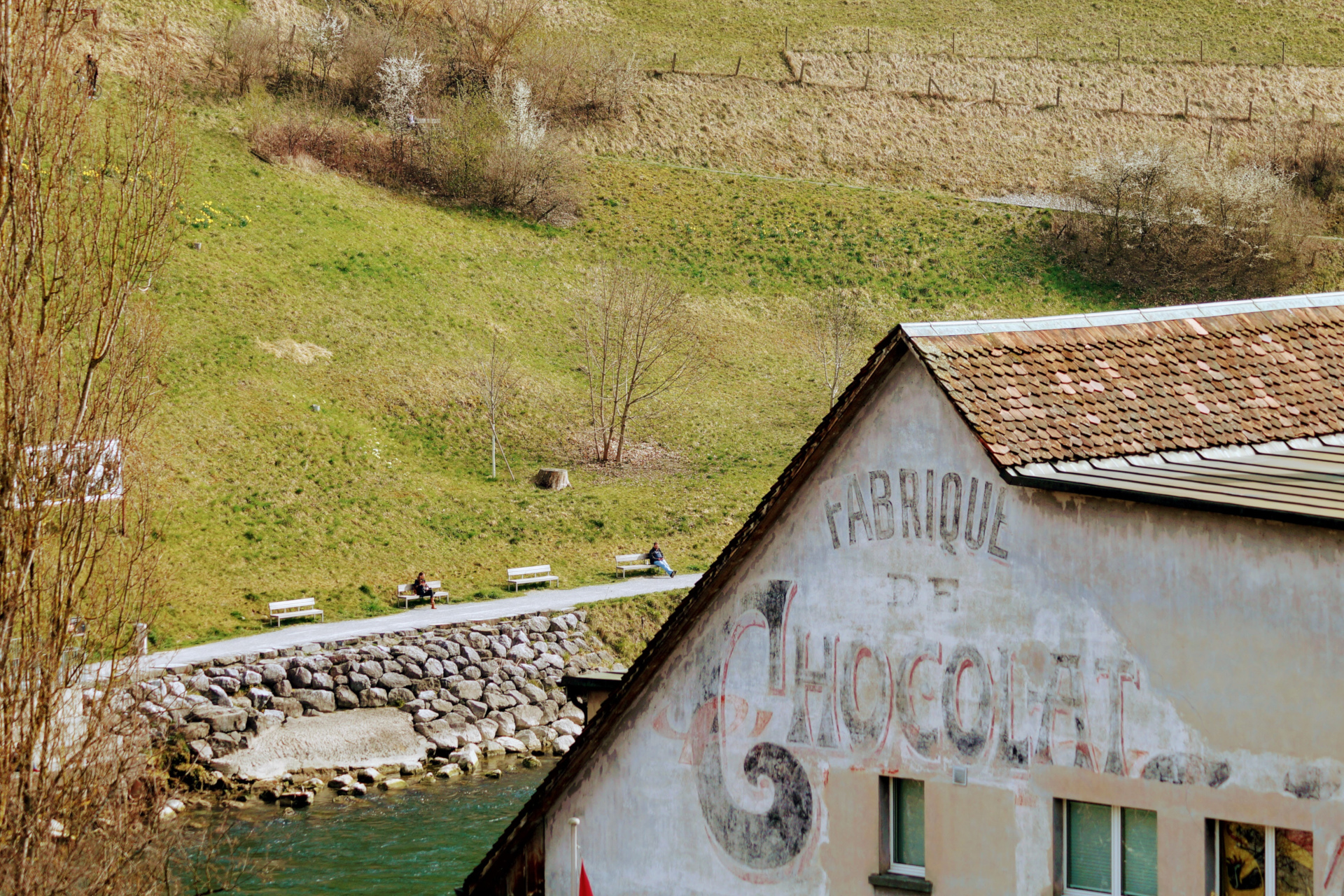
Discoveries and development
Chocolate was developed during the 19th century and new discoveries and products saw the light of day.
The modern chocolate was born in 1828 when the Dutch chocolate manufacturer Coenraad Johannes van Houten came up with the method of squeezing a large part of the cocoa bean fat into cocoa butter – and then grinding the remainder into cocoa powder.
The modern chocolate cake and praline was invented in 1847 in England by the company Joseph Fry & Sons. There they mixed cocoa butter, sugar and cocoa into a mass that solidified. Voila, the chocolate cake was born.
In 1875, the Swiss Daniel Peter added condensed milk (made by Mr Nestlé) and thus the milk chocolate was invented.
By the early 20th century, large chocolate companies had emerged and mass production was in full swing. Surely names like Tobler, Nestlé and Lindt sound familiar?
Some people love chocolate, others dedicate their lives to it.
If anyone knows how to make good chocolate without sugar, it’s Roger Aidoo.
He was born in Ghana, one of the world’s most important producers of cocoa beans. He later studied nutrition and food science at university and then moved to Belgium where he took a master’s degree in food technology.
– In Ghana, they know everything about cocoa beans, but not so much about chocolate. In Europe, much is known about chocolate making, but not much is known about cocoa beans. So I had the opportunity to combine my knowledge from both Africa and Europe, says Roger Aidoo.
Around the year 2010, sugar reduction began to come into play, but the sugar-free chocolate that existed at that time was not good. Roger Aidoo decided to create an optimal solution to replace sugar in chocolate.
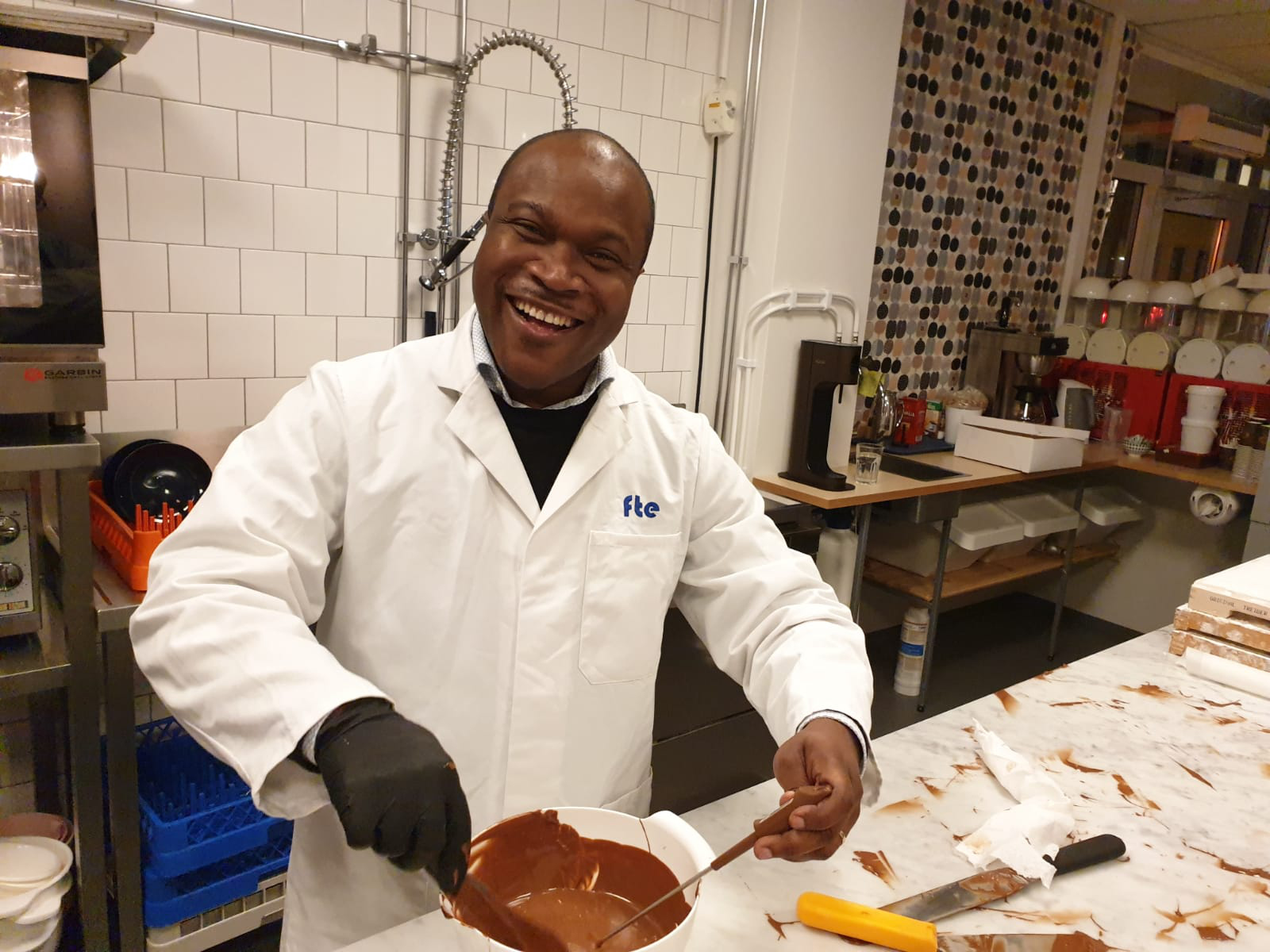
The solution for sugar-free chocolate is completely natural
– Making sugar-free chocolate is difficult, really difficult. What many don’t think about is that sugar is the main component in chocolate. It adds not only sweetness but also texture and bulk. Sugar is like the building blocks of a house. If you remove them, everything falls apart, says Roger Aidoo.
So how to proceed if you want to replace sugar in chocolate? Roger worked on that issue as a doctoral student at his university in Belgium. For those who want to delve into the subject, there is one scientific article that Roger Aidoo wrote about the topic (download pdf).
– First, you have to find something that gives bulk to get the right texture on the chocolate. It must not be too thick and not too thin. Sugar also contributes to the viscosity of the chocolate, which must be taken into account. The best bulking agents I have found are inulin and polydextrose or a combination of both. There are other fibres as well, but you will always find them together with one of these two, says Roger Aidoo.
What about sweetness?
When you have found a good bulk with a nice texture, we come to sweetness. Here one must take into account that different sweeteners are covered by different rules in different parts of the world. Some are not allowed everywhere. Many sweeteners also have a bitter aftertaste or taste of liquorice.
– A common way to reduce sugar in chocolate is to use sugar alcohols, mainly maltitol. But some people are a little sensitive to sugar alcohols, it may cause flatulence and bloating. Therefore, you can’t use too much sugar alcohols, just a pinch to bring up the sweetness. To really get the sweetness up, you need a high-intensity sweetener such as steviol glycosides, says Roger Aidoo.
Taste tests that impress
– Different producers have different wishes, and therefore I don’t always use maltitol but also other sugar alcohols such as erythritol or xylitol. However, the basic recipe consists of dietary fibres, sugar alcohols and steviol glycosides, says Roger Aidoo.
– When we did taste tests where participants got to taste chocolate with sugar and compared it with sugar-free chocolate, only 30 per cent could detect a difference, and many of them preferred the chocolate without sugar. When we did tests where the participants were only allowed to taste the sugar-free chocolate, very few could determine that it was sugar-free, says Roger Aidoo.
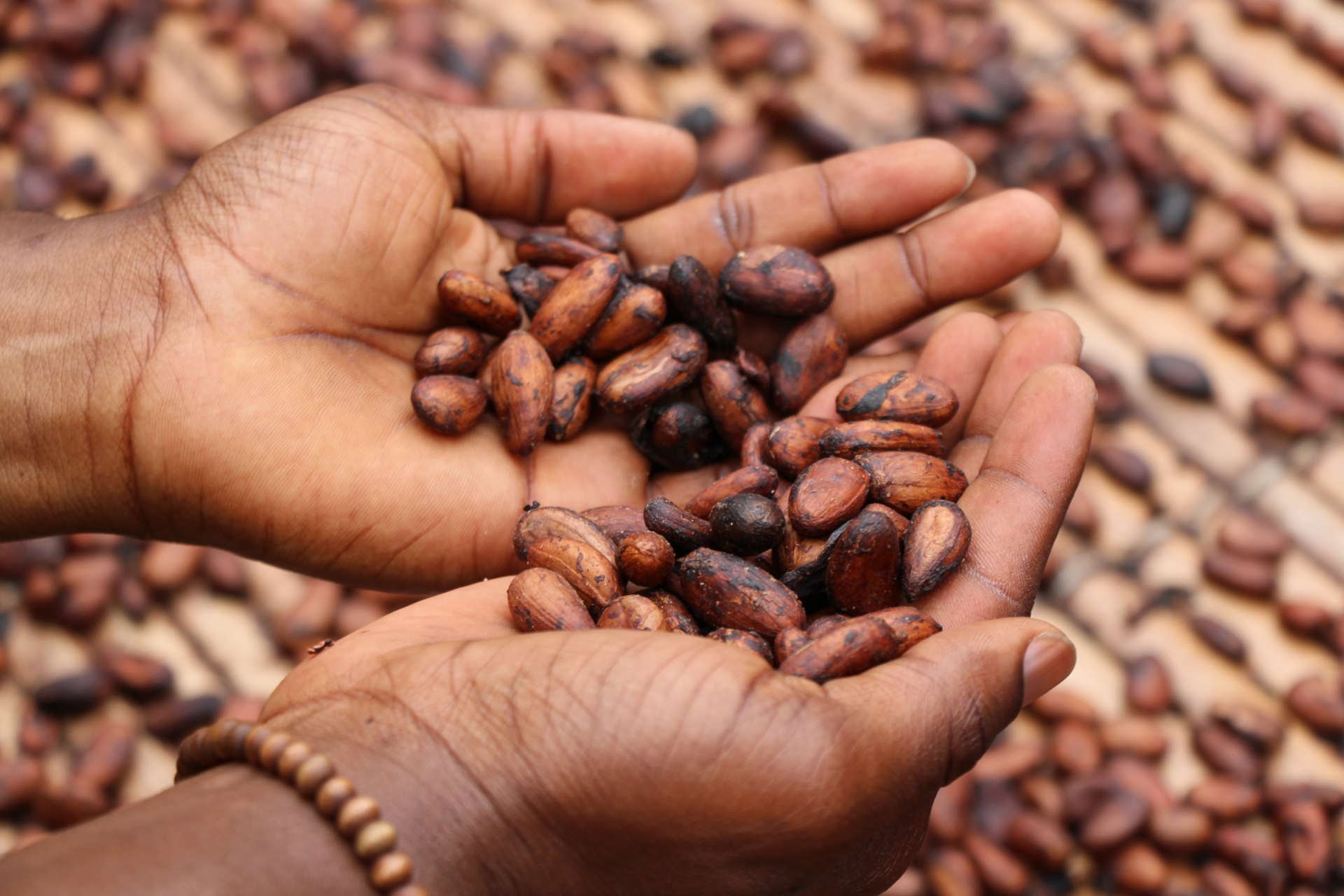
How to make chocolate?
Wouldn’t you like to make your own chocolate? First, you travel to a country where you will find cocoa trees. They thrive in warm climates with a lot of rain.
The largest cocoa-producing countries are Mexico, Brazil, Ghana, Côte d’Ivoire, Nigeria, Cameroon, Malaysia and Indonesia. Of these countries, Ghana and Côte d’Ivoire produce the most. They account for close to half of all world production.
When you have travelled to any country and found a cocoa tree with yellow fruits (then they are ripe), you open the cocoa fruit and pick out the seeds. These seeds are called cocoa beans.
The author himself once had the privilege of doing just that. That time, they put the cocoa beans in their mouths and sucked in the good pulp around them, after which the cocoa beans were spat out on the ground.
Stop!
Cocoa nibs
Pick up these precious cocoa beans immediately and leave them to ferment in the sun under a palm leaf for about a week. Then roast them at 100–150 degrees for between 20 and 40 minutes.
Crush the roasted cocoa beans and blow off the skins. What is left is called cocoa nibs.
A Tip! Cocoa nibs can be bought in stores if you want to jump straight to the next step in the process.
Mix the cocoa nibs into a cocoa mass. If you do this at home, you’re finished by now. Mix with sugar and it’s done. If you own a factory, go to the next step.
Set aside some of the cocoa mass. It may be as it is. The rest of the cocoa mass is further processed. It is fed into a press that squeezes out a large part of the fat. This fat is called cocoa butter. It is steamed in a vacuum so that it doesn’t taste bad.
Three ingredients
What is left of the cocoa mass is cooled and finely ground into cocoa powder. What is left of the cocoa bean now are three ingredients: cocoa butter, cocoa powder and the part of the cocoa mass that you put aside.
Now you can finally create what we all long for: chocolate. In the simplest basic recipe, you mix cocoa mass and cocoa butter with sugar. Clear!
You can also add cocoa powder to reduce the amount of sugar and make the chocolate darker. Chocolate with 80 per cent cocoa content and more, always comes with added cocoa powder. If you want to create milk chocolate, add milk powder. You get white chocolate by mixing cocoa butter and sugar (no cocoa mass) with milk powder.
From here, it is only the imagination that sets the limits.
Further reading!
Find out more about Roger Aidoo in the article series Bayn’s heroes. If you want to know more about the different ingredients mentioned in this article, we recommend the article series From Seed to Eureba and Sugar Reduction in Practice.
Enjoy the reading!
Please, share this article if you liked it.
[et_social_share]

